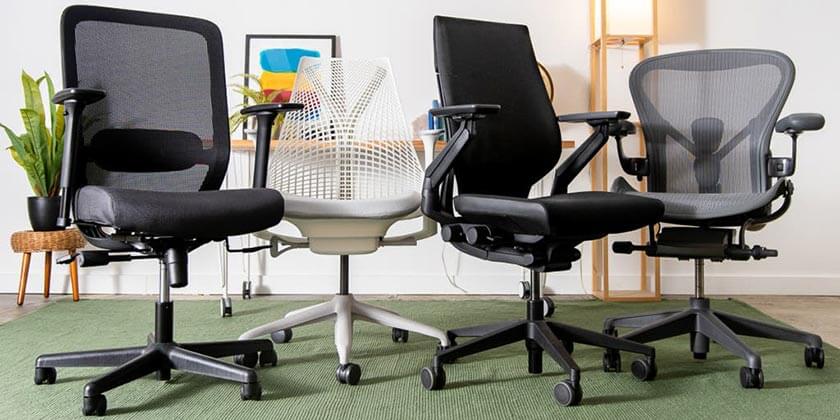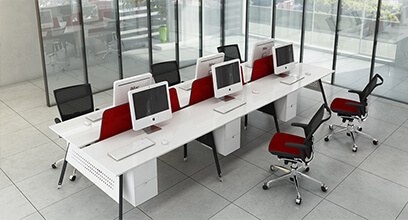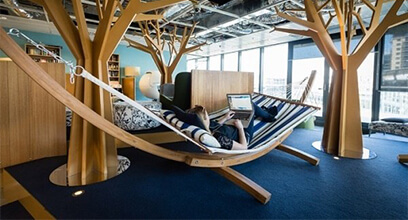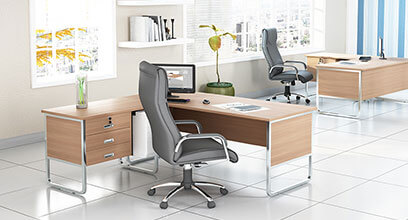What is a partition? (Introduction of types and applications)
In this article, you will get acquainted with the partition and its installation purposes, the requirements and characteristics of the partition, the factors affecting the selection of the partition and its types in terms of material, movement and application. Lightweight partitions or partitions are portable walls that are often used to separate and create multiple rooms in a large space.
Typically, these walls are designed and installed modularly and to fit any space. As you know, today with the expansion and development of organizations and the lack of building space, the use of partitions to divide existing spaces for optimal use in interior design has increased. Partitions with different designs and features are each used for a specific purpose and tailored to the budget and needs of each organization or collection.
What is a partition?
Partition walls are vertical partitions that are used to separate the interior of a building into rooms and walk-through areas such as corridors. By using partitions, the interior spaces of a building can be used optimally. After building a building, large spaces can be divided by partitioning, and by separating the space, several interior spaces can be provided to the building users.
Partition installation goals:
Privacy: Partition walls can be used for privacy purposes. Some parts of the building, such as the archive and finance rooms or the conference room in office environments, require privacy, which the office partition addresses.

Partitioning: Separation is one of the most common functions of partitions. Partitions are used to divide large building spaces into smaller and more flexible spaces. In some cases, the space is not large and based on the application, there is a need for separation: for example, a kitchen is divided into two parts using cooking and dining.

Roof Stability: Sometimes a partition wall is used as a support member to hold the roof in place and not move it.
Decoration and decoration of the space: In addition to the mentioned purposes, sometimes partitions are used to decorate and beautify the interior of building rooms or offices. Designing home interior decoration with partitions is one of the modern and exciting ideas that has found its special fans in contemporary architecture. Interior decoration designers are interested in using them in their designs due to the beautiful materials and eye-catching appearance of the partitions.
Requirements and properties of partitions:
A good partition must meet the following conditions:
- Must provide adequate privacy for its interior space.
- Acts as a sound barrier. (Reference to the sound insulation partition of the surroundings)
- Be lightweight to put less pressure on the structure.
- Strong enough to withstand vibration loads.
- Be thin to use the maximum floor space (Reference to single-walled partitions)
- Be as moisture-proof as possible. (Reference to partitions under aluminum environment in laboratories)
- Resistant to fire, heat, fungi and insects such as termites.
Factors affecting partition selection:
- Cost considered
- Materials used in the partition (such as glass, aluminum, etc.)
- Weight of partitions (in terms of bearing capacity of the building structure)
- Installation speed
- Reliability (do not damage or destroy partitions during disassembly)
- Durability
- Expected functions such as the need for sound, fire or moisture resistance
Types of partitions in terms of application:
In general, partitions are divided into two categories: office and home.
Office Partition:
Office partitions can be used in public and private companies and offices, schools, libraries, exhibition halls, training rooms and other places that require separation and spatial division.
Office partitions are mostly used to separate the space and protect the privacy of employees, and in addition to the task of dividing the space, their visual beauty can give a special effect to the office environment.
Office partitions can be prepared and installed at different heights. For spaces that only need to be partitioned and sound insulation does not matter, partitions can not extend to the ceiling.
Partitions used in office environments can be smart; The smart partition has the ability to adjust the view to the outside; That is, the glass becomes clear or opaque at any time as needed.
Soundproof partitions are the best idea for spaces that need silence so that employees can focus on work. These partitions are also suitable for conference rooms so that sound does not penetrate from the inside out and vice versa.
Polyester fibers or natural wool wood are commonly used in partitions that require insulation (Resource 4).

Home Partition:
In small apartment houses, using partitions instead of walls is a good idea to divide the spaces because it takes up little space and in case of need to change the interior decoration of the house, you can easily move them and do not need to destroy the walls.
In large houses, the use of partitions is also affordable. After the construction is completed, the partitions will help you to divide large spaces as well as beautify the space. For example, you can use the partition to separate the private and public halls (reception).
In general, home partitions are popular because of the separation of spaces, without the need to destroy the walls, the ability to transmit natural light while separating the two spaces from each other, as well as beautifying the interior of the house.

Home partitions are mostly removable; These partitions are called screens. Screens can be divided into the following categories:
Home entrance partition:
These partitions are used to create a barrier to the view from outside to inside the house. In plans where the interior space can be seen when the front door is opened, these partitions are a good barrier to close the visual view of the interior space of the house.
Partition in front of the service:
Sometimes, for various reasons, the bathroom is in the wrong place in the plan and overlooks spaces such as the hall or kitchen. In this case, using a partition can solve the problem of viewing spaces.
Home partition separating rooms and halls:
As mentioned earlier, we can use partitions to divide space into large plans. For example, if we do not want the public hall or reception space to have a direct view of other spaces, we will place a two-sided partition in front of the space, in addition to separating the space, the beauty and appearance of the space will be doubled.
Kitchen partitions:
Open-plan kitchens are sometimes criticized by some families for not being compatible with Iranian culture. Accordingly, the kitchen partition is the best and least expensive solution that can be used after the construction of the building to reduce the direct view of the kitchen space and, in addition, does not prevent natural light from entering the kitchen.
Types of partitions in terms of displacement:
Partitions are divided into the following two general categories in terms of portability:
Fixed partition
The fixed partition is connected to the ground with bolts or glue. The height of these partitions varies, some of them are high based on the need for space and are attached to the ceiling.
Movable partition
This type of partition, also called floating, is one of the attractive partitions that is most used in the residential sector and is used as a decorative element in the interior design of the house. The ability to open and close and fast transport is one of the advantages of the floating partition, which has made it a flexible and popular partition.
The movable partition is divided into five categories: rail, screen, hinge, wheel and accordion.
Types of partitions in terms of materials used:
Glass partition:
This type of partition is capable of transmitting natural light and providing light. Glass partitions come in a variety of colors, materials and sizes and are designed in simple, matte, colored, needle types.
The frame of these partitions can be made of different materials such as wood or metal. In addition, these partitions can be produced without frames or without frames or so-called frameless, in which case the space will appear wider and brighter.
To create privacy in glass partitions, you can choose the type of opaque or with blinds to control the view of the surrounding spaces in addition to the passage of light.

Wooden partitions:
Wood is always a reminder of nature and is closely related to human nature. Wooden partitions can create a sense of nature in the interior of the building. The color and model of wood of this partition can be coordinated with other wooden elements in the space.
The advantages of this partition include lighter weight than other types of partitions and its disadvantages are low fire resistance. These partitions are also not suitable for use in places that require sound insulation. The wood used in wooden partitions is made of MDF.
One thing to keep in mind when choosing MDF partitions is that they should not be placed in a high humidity environment or in areas that need to be washed frequently.

Metal mesh partition:
Metal partitions are thin, strong and durable and can be designed and manufactured as fire retardants. These lightweight separators require a metal or wooden frame to stabilize their position.
The hollow space inside them is filled with insulating material. The main use of these partitions is industrial and office buildings. The outer surface of these partitions is flattened with plaster.
Cement asbestos partition:
These partitions are light, cost-effective, impermeable, durable, waterproof and fireproof. The sheets are joined together by cement mortar. The sheets can be attached and secured to one or both sides of the frame. These partitions, like the metal type, are placed in a fixed frame.
Gypsum board partition:
The walls of the gypsum board partition are made of burnt gypsum or Paris gypsum. To reduce the weight of these partitions, sawdust or other fibrous materials are mixed with gypsum.
Brick partition:
These partitions are more economical due to cheaper raw materials. Bricks are more durable due to their hardness and can be reused and recycled. Also, in the process of producing bricks, less pollution is created in the environment, and in this regard, brick partitions are in line with the goals of sustainable architecture.
At the same time, brick partition walls also have disadvantages; Among other things, their construction time is relatively long and brick walls can not be used in seismic areas. Another disadvantage of brick partitions, which has reduced their popularity compared to partitions with other materials, is that they are difficult to clean.

Concrete partitions:
The concrete partition consists of a simple concrete or reinforced slab that is laterally supported by vertical members. These signs are prepared in two ways; Prefabricated or cast on site.
Another point about concrete partitions is that the cost of concrete partition molds is high; This feature makes people who consider the economic criteria and low cost for the selection of partitions, do not choose concrete partitions to divide the interior spaces of their building.
Clay block partition:
Clay block partitions are made of clay or pots and are designed and manufactured as solid or hollow.
One of the characteristics of these walls is their fragility and brittleness, which is also strongly felt in transportation and has a lot of material waste.
The advantages of clay block partitions include high fire resistance and cheapness of clay blocks compared to similar cases such as cement blocks, etc.
These partitions alone can not act as sound insulation, and if you need to create sound insulation, auxiliary material should be used. The exterior surface of clay walls has more roughness than other materials; Therefore, a thicker layer of plaster is needed to smooth the work surface.
One of the disadvantages of clay block partitions is their high fragility, which makes clay block partitions not suitable for use as load-bearing walls in the building. Another disadvantage is the relatively high weight of these blocks that are applied to the building structure. Also, building and executing these partitions consumes a lot of energy.
If we want to compare clay block partitions with concrete partitions, clay block partitions increase the project execution time because they are smaller than concrete blocks.
PVC partition:
PVC is an affordable building material that has become a good alternative to other building materials such as clay, wood and concrete in recent years due to its many benefits. These partitions have a high resistance to impact and heat.
PVC partitions are one of the types of office partitions that, as one of the best light separators, separate the space completely correctly and according to taste, and have a special beauty, because they have different and stylish designs and models.
It is interesting to know that more than 50% of man-made PVC is used in construction. This high figure is due to the cheapness and simplicity of PVC assembly.
Due to their resistance to moisture and water, these partitions are suitable for use in places that have a lot of washing. Also, in terms of performance, PVC partitions can be run with other materials such as glass, etc.
If we want to compare PVC partitions with wooden partitions, PVC partitions have a much lower cost than similar products such as MDF. To choose these partitions, keep in mind that the thickness of PVC partitions is important. The thicker they are, the more beautiful and stylish they will look and, in addition, the more resistant they will be.
PVC partitions with hollow internal mesh have low mechanical strength against direct impact and are easily damaged, so their use is not recommended in entrances and busy places.
Features of PVC partition include the following:
• Non-flammable
Relatively high lightness and durability
• Quick and easy installation
• Soundproof
• Heat and cold insulation
• Variety in design and color according to people's tastes
• Ability to install on all surfaces
• Resistance to the sun's rays
• Impact and pressure resistance
Washability and color fastness
• Resistance to intrusion of pests
• Resistance in wet places

Polycarbonate partition (PC):
These partitions are very suitable for places that need natural light due to their light transmittance. Polycarbonate partition can be combined with other materials such as wood and glass.
Features of this partition are resistance to moisture and oxidizing agents as well as mineral and organic acids. You can use these partitions for places that need a lot of washing, such as hospitals and laboratories. Polycarbonate partitions have 250 times more impact resistance than glass.
Plant Partition:
Studies have shown that 10% of employee absenteeism can be attributed to working in environments that have nothing to do with nature. (resource 1) The inclusion of vivid elements or views of nature in an office environment can prevent fatigue from highly focused tasks, increasing processing speed by up to 12%. (resource 2) Increase mental function and memory by 10 to 25%. (resource 3) Therefore, the more the work environment is related to nature, the higher the productivity of employees.
Plant partitions or soft partitions are attractive partitions that, in addition to the use of their partitions, make the interior beautiful, keep the air clean and reduce noise pollution.

Resources:
1-Elzeyadi, I. "Daylighting-Bias and Biophilia: Quantifying the Impacts of Daylight on Occupants Health." In: Thought and leadership in Green Buildings Research. Greenbuild 2011 Proceedings. Washington, Dc: USGBc Press. 2011
2-Heschong, lisa. Heschong Mahone Group. (2003) "Windows and Offices: A Study of Office Worker Performance and the Indoor Environment." California Energy commission: Pacific Gas and Electric company, California.
3-Heschong, Lisa. Heshong Mahone Group (2003) “Windows and Offices: A Study of Office Worker Performance and the Indoor Environment” - California Energy Commission
FAQ
The most important reasons to install partitions are to divide the space and create privacy. Other reasons are the decoration of the space and the stability of the roof.
Yes, office and home partitions are different in terms of variety of materials and designs. Wood and glass are more popular in office partitions.
Paravan is a kind of movable partition.








Share